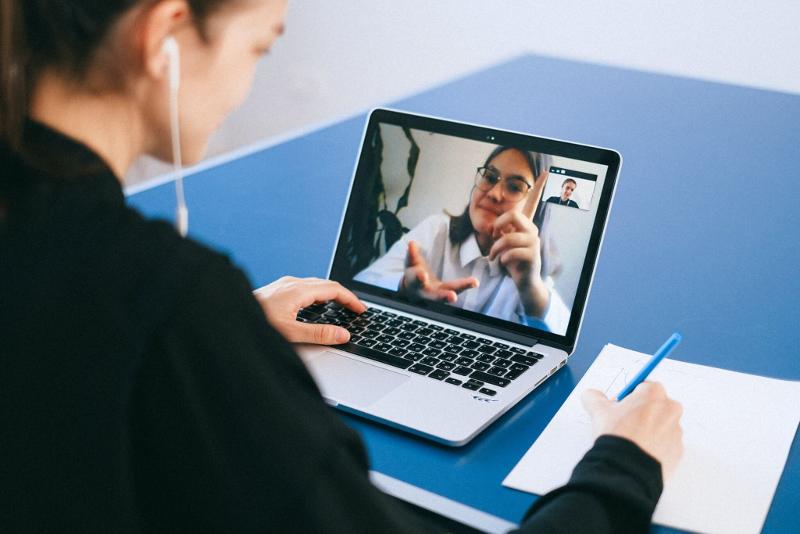Countless conversations occur between people every day, and each time you stop to chat with the mailman or run into an old friend at the local coffee shop, your brain engages in an intricate choreography of neural activity across regions of the mind which control social interactions. But did you know that the brain activity of two people conversing over virtual meetings like Zoom is actually quite different? In a groundbreaking study, researchers from Yale University have found that neural signaling is substantially suppressed during online interactions compared to activity observed among those having face-to-face conversations. Join us as we delve into the fascinating world of human social interactions and uncover the surprising differences between in-person conversations and Zoom chats.
The Importance of Social Interactions
Explore the significance of social interactions in human societies and cultures.
Social interactions are an absolute cornerstone of all human societies and cultures. Human beings crave connection, and our brains are finely tuned to process social information during in-person encounters. These interactions provide us with a sense of belonging, emotional support, and opportunities for collaboration and growth.
Research has shown that engaging in face-to-face conversations can have numerous benefits for our mental and emotional well-being. It helps reduce feelings of loneliness and isolation, improves cognitive function, and enhances our overall satisfaction with life. In a world where technology has become increasingly prevalent, understanding the impact of different modes of communication on our social interactions is crucial.
The Study: In-Person Conversations vs. Zoom Chats
Discover the groundbreaking study conducted by Yale University comparing neural activity during in-person conversations and Zoom chats.
To investigate the differences between in-person conversations and virtual meetings, researchers from Yale University conducted a groundbreaking study. They recorded the neural system responses in individuals engaged in live, two-person interactions, as well as the responses seen in Zoom chats. The findings revealed a stark contrast in neural signaling between the two modes of communication.
During in-person conversations, the researchers observed increased neural activity, as indicated by longer gaze time and larger pupil diameters. This heightened activity was associated with enhanced social engagement and reciprocal exchanges of social cues between the interacting partners. In contrast, Zoom chats showed significantly suppressed neural signaling, suggesting a less immersive and engaging experience compared to face-to-face interactions.
The Role of Neural Signaling in Social Interactions
Delve into the role of neural signaling in facilitating social interactions and its implications for virtual communication.
Neural signaling plays a crucial role in facilitating social interactions. When we engage in face-to-face conversations, our brains exhibit increased neural activity, reflecting heightened attention, emotional processing, and social cognition. This enhanced neural signaling allows us to pick up on subtle social cues, such as facial expressions and body language, which are essential for effective communication and understanding.
In virtual communication platforms like Zoom, however, the researchers found that neural signaling is significantly suppressed. This suggests that the social neural circuitry in our brains, which is typically activated during in-person interactions, does not respond in the same way to online representations of faces. The absence of this "privileged access" to social neural circuitry may explain the differences in engagement and social cues observed between in-person conversations and Zoom chats.
The Impact of Zoom Chats on Social Behaviors
Explore the implications of Zoom chats on natural human social behaviors and the need for in-person interactions.
The findings of the study highlight the importance of live, face-to-face interactions for natural human social behaviors. In-person conversations provide a rich and dynamic environment for social engagement, fostering deeper connections and a greater sense of presence. The increased neural activity and reciprocal exchanges of social cues during in-person interactions contribute to a more fulfilling and satisfying social experience.
While virtual communication platforms like Zoom have become essential tools for remote work and maintaining connections during times of physical distancing, they may not fully replicate the richness of in-person interactions. The limitations of online representations of faces and the suppressed neural signaling observed in Zoom chats suggest that they may not provide the same level of social engagement and connection as face-to-face conversations.
Conclusion
In conclusion, the study conducted by Yale University sheds light on the differences between in-person conversations and virtual meetings like Zoom. The findings indicate that our brains exhibit more robust neural activity and engagement during face-to-face interactions, while online interactions show suppressed neural signaling. This highlights the importance of in-person conversations for natural human social behaviors and the limitations of virtual communication platforms in replicating the richness of social interactions.
FQA
How do in-person conversations differ from Zoom chats?
In-person conversations involve increased neural activity, longer gaze time, and enhanced social engagement, while Zoom chats show suppressed neural signaling and less immersive experiences.
Why are in-person interactions important for social behaviors?
In-person interactions provide a dynamic and rich environment for social engagement, allowing for deeper connections, increased presence, and more fulfilling social experiences.
Can virtual communication platforms fully replicate in-person interactions?
Virtual communication platforms like Zoom have become essential tools, but they may not fully replicate the richness of in-person interactions due to limitations in social neural circuitry activation and the absence of subtle social cues.
What are the implications of the study's findings?
The study highlights the significance of live, face-to-face interactions for natural human social behaviors and emphasizes the need for in-person conversations to foster deeper connections and a greater sense of social presence.

